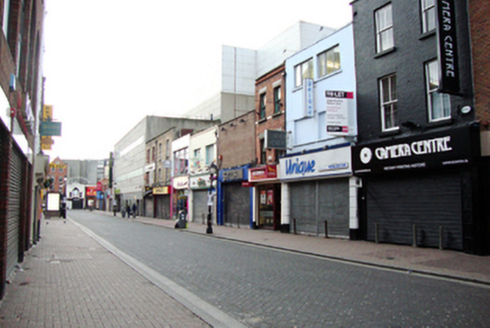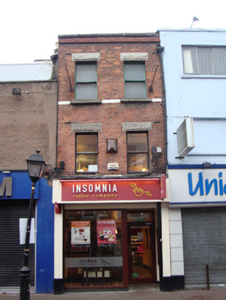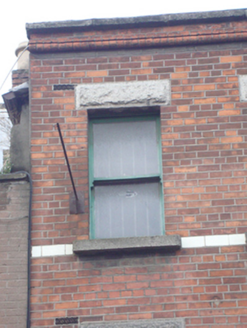Survey Data
Reg No
50010465
Rating
Regional
Categories of Special Interest
Architectural
Original Use
House
In Use As
Shop/retail outlet
Date
1880 - 1900
Coordinates
315628, 234558
Date Recorded
07/12/2011
Date Updated
--/--/--
Description
Terraced two-bay three-storey house, built c.1890, now in use as café. Hipped roof hidden behind red brick parapet wall having granite coping, cement rendered chimneystack with terracotta pots at party wall with No.21 to south. Cast-iron hopper to east elevation breaking through parapet and diverted to north at first floor level. Red brick walls laid in English garden wall bond, having replacement brick to second floor and bull-nosed brick cornice to parapet. Decorative cast-iron vent plates at second floor and first floor window lintel level. Tiled sill courses to first and second floors. Square-headed window openings having rock-faced ribbon dressed granite lintels, granite sills and exposed reveals. One-over-one pane timber sliding sash windows to upper floors. Modern timber shopfront to ground floor.
Appraisal
No.20 Liffey Street Upper maintains an attractive brick front combining with the granite and tiled detailing and the retention of timber sash windows to create an aesthetically pleasing survival within a street of many modern structures. Liffey Street Upper formed part of the Jervis Estate, developed by Humphrey Jervis (1630-1707) in the area around Saint Mary’s Abbey, from 1674 onward. Jervis developed a network of streets arranged in a nine-square grid, including Jervis Street, Stafford Street (now Wolfe Tone Street) and Capel Street, as well as building Essex Bridge. Liffey Street Upper was occupied mainly by furniture brokers in the mid-nineteenth century, and today it remains focused on retail, having many three-storey eighteenth-century houses converted into shops. An early eighteenth-century street, it was mostly rebuilt in the last decades of the nineteenth century.





